Film was apparently invented to make money. Another thing is the transformative reach of the medium, from cultural to social, from entertainment to myth-making. And, above all, its ability to provide us with sensations and stimulation, both cognitive and emotional.
The new art was born and developed from the first moments in the Paris of the Belle Époque, a time of expanding imperialism, the rise of capitalism and the weakening of the European aristocracy. The bourgeoisie was already showing muscle and began to play a key role in the development of politics, science and art. Many things change: aeroplanes are seen in the skies, ships sail by steam, people travel by train and automobile, electric street and shop lighting is introduced, telephones are used, telegrams are sent and music is played on the gramophone.

Thomas Alva Edison.
Thomas Alva Edison, already an inventor based in New York, set up his headquarters in an uninhabited farmhouse in Menlo Park (New Jersey), from which inventions that would change the lives of many of the world’s inhabitants would emerge. In 1895 he founded the first production company, The Biograf Company, which rivalled Germany’s UFA, Sweden’s Svensk Filmindustri and France’s Pathé. This company produced many of the first universal names in American cinema, such as D. W. Griffith, Mary Pickford, Lillian Gish and Lionel Barrymore.
Within a very short time, the film industry spread throughout the world, especially around a ranch near Los Angeles called Hollywood, which soon became known as the Mecca of cinema.
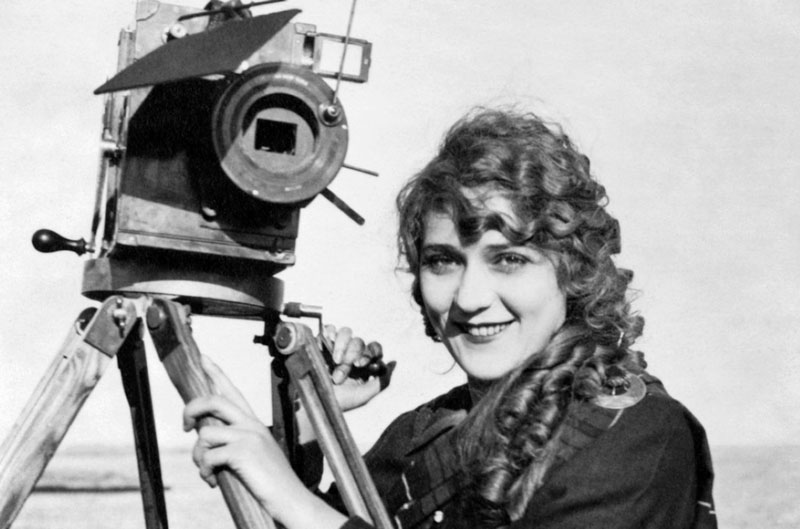
Alice Guy.
From the first minute of the existence of moving images —the same thing happened with painting and analogue photography— underwear appeared on the scene, and therefore, what we call in a very imprecise way, the erotic component. Film promoters soon understood that if beauty is in the eye of the beholder, eroticism is in the mind, and what governs our reactions is not only what we look at but how we perceive it.
The first kiss on the mouth, without tongue, but close, is seen on a screen in 1896, only a year after the Lumière brothers released their first work, a set of short films, including The Departure of the Lumière Factory Workers (46”), at the Grand Café, Boulevard des Capucines 14 (Paris). The Kiss is a longer film, one minute long, made by Edison’s company.
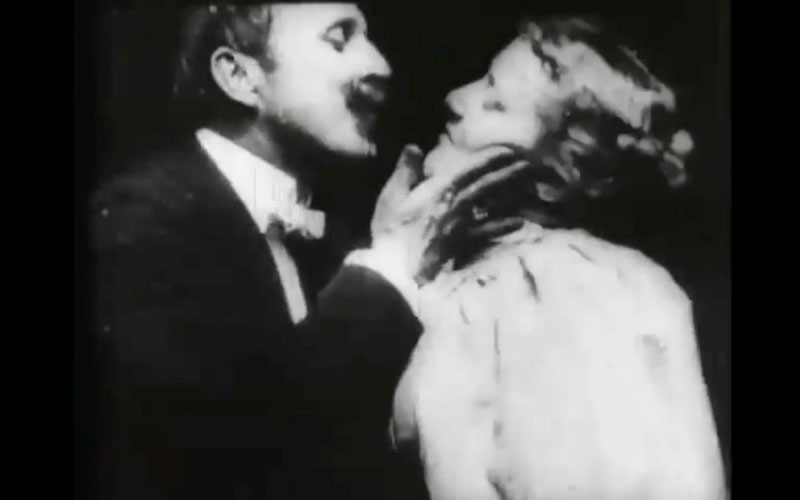
The Kiss (William Heise, 1896)
The film stars May Irwin and John C. Rice, the two leads in a Broadway vaudeville show called The Bully Song, in which they engaged in a prolonged kiss in the final scene. Thomas Edison, who witnessed the play, hired the performers to repeat the scene and film them with his camera. And this scene, when seen on screen, had much more impact and resonance than the one that was played every night during the theatrical performance. And from that day on, the power of the close-up became clear.
Eroticism advances so fast in the cinematographic field that the term voyeur films soon arises. The viewer assumes the role of voyeur, the erotic voyeur, in films where the scene is viewed through a keyhole. Biograf made several films in this style, such as Through the Keyhole in the Door (1900) and Peeping Tom in the Dressing Room (1905), in which the idea of the voyeur, the rogue who observes what he shouldn’t, is first expressed.

Pola Negri.
In those years, cinema with a profusion of underwear took off in France thanks to Georges Méliès himself with Après le bal (After the Ball), in which a woman takes off her underwear and petticoats, and takes a bath with the help of her maid. The same year saw Le coucher de la mariée (The Married Woman Goes to Bed), which narrates in unprecedented detail the amorous games of a couple on their wedding night, including the stripping of the woman who is observed by her husband crouched behind a screen. Voyeurism in its purest form.
In 1900, at the Universal Exhibition in Paris, the so-called Pavillon de l’Elégance was created, the term haute couture was coined and the couturier Paul Poiret was the guru with proposals that changed the relationship between women and fashion, making the corset disappear and promoting transparent stockings, something absolutely revolutionary in those years.

Delfos dresses.
It is the time for a universal Spaniard who has not been recognised until recently: Mariano Fortuny (Granada, 1871), a sculptor, painter, photographer, set designer and one of the most influential textile designers of the first half of the 20th century. He invented a dress, called Delphos, which became an emblem of women’s liberation from corsets and other constricting elements. She also created the Knossos shawl, a piece of silk pleated with a secret method that to this day has not been deciphered. His dresses were worn, among many others, by Isadora Duncan, Peggy Guggenheim, Sarah Bernhardt, Lauren Hutton and Lauren Bacall. Orson Welles wore Fortuny costumes in Othello (1951).
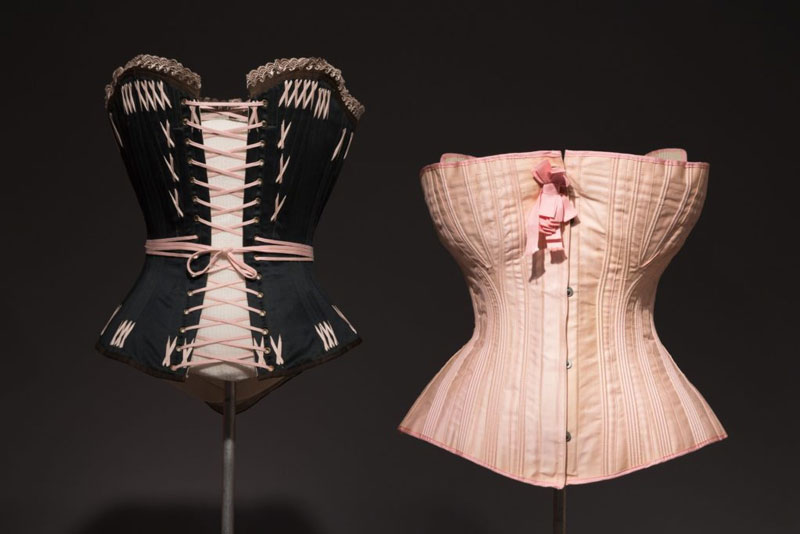
At the beginning of the 20th century, just as today, porn cinema developed in parallel to commercial cinema, with its natural characteristics: lots of explicit images and scarce subject matter and narrative, although with good profits due to the low cost of the productions. It was also marketed, but through other channels: in private men’s clubs, in the back rooms of shops, or cinemas and theatres at alternative times, with sessions that, in some cases, reached 500 spectators.
The history of the early years of cinema is filled with films that move between the erotic, the slightly naughty and the purely conventional. The erotic scenes are interwoven into the plot, which often deals with epics, epic stories, biblical fragments or literary classics.
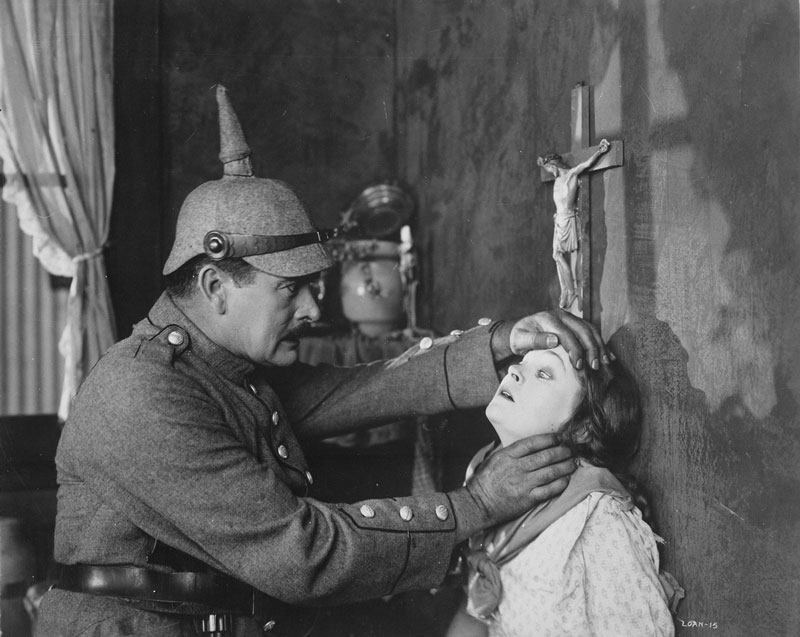
Many of the actors and actresses in Edison’s early films are his own in his New Jersey laboratory. But there is one person who creates the methodology of making a film, including the control of its financial costs and production; he is the first to require that, instead of one person in charge of everything, there should be different functions such as director, editor and scriptwriter. That person is Thomas Arper Ince.
Ince makes the first cowboy film, Bar Z’s New Cook, in 1911 and establishes Inceville Studios in Santa Monica; he hires a circus company and sets up his own western films with a crew of 350 people, including riders, actors, Indian tribesmen with their horses and other equipment. War on the Plains (1912), the first film featuring Inceville Indians, is a success. He shoots Custer’s Last Raid (1912) for which he hires as extras about 100 members of the Sioux tribe from the reservation in addition to those already working there.

Many of the actresses of the early years of American cinema came from the world of theatre and music hall. Many young actresses made the leap when they worked as chorus girls in the Ziegfeld Follies, a company that performed on Broadway, inspired by the Folies Bergère in Paris and under the baton of the couple formed by the actress Anna Held and the theatre producer Florenz Ziegfeld.
Among the company’s chorus members are future actresses, many of them very successful and some Oscar winners: Fanny Brice, Marion Davies, Paulette Goddard, Joan Blondell, Olive Thomas, Jeanne Eagels, Barbara Stanwyck, Billie Dove, Lilian Bond, Louise Brooks, Nita Naldi, Julanne Johnston, Mae Murray, Dorothy Mackaill, Peggy Hopkins, Odette Myrtil, Lilyan Tashman, Claire Dodd, Cecile Arnold, Dolores Costello, Dorothy Sebastian, Juliette Compton, Mary Nolan….
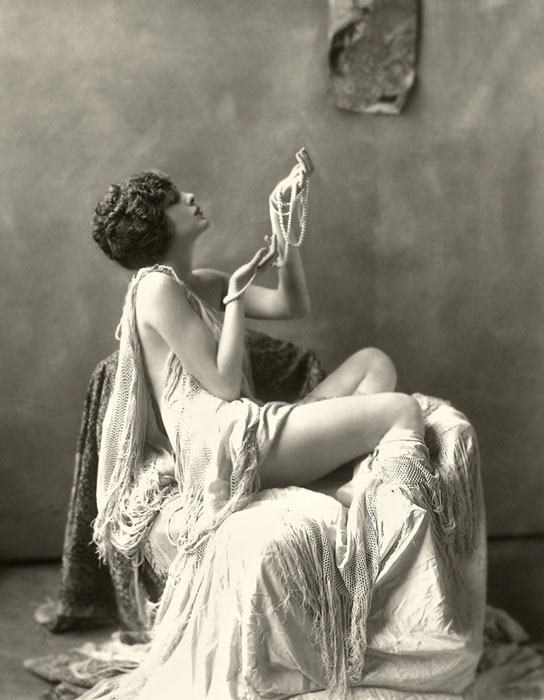
But not all of them passed the selection tests. Among those who failed were: Norma Shearer (Best Actress Oscar 1930), Joan Crawford (Best Actress Oscar 1945, Golden Globes 1974), Gypsy Rose Lee (Star on the Walk of Fame), Lucille Ball (Golden Globes 1979),
The early years of cinema have characteristics that are unimaginable today. The actors and actresses themselves provided their own costumes. Some wealthy actresses come to the set in their luxurious dresses and pearl necklaces, others wear dresses made by their mothers, and others wear what they have because they can’t afford to buy a dress for the occasion. We can imagine who plays the role of the rich and the poor in the film…
Eventually, the dressers appear, in charge of finding the right clothes in costume shops and theatrical clothing stores, according to the director’s or the protagonists’ own judgement.
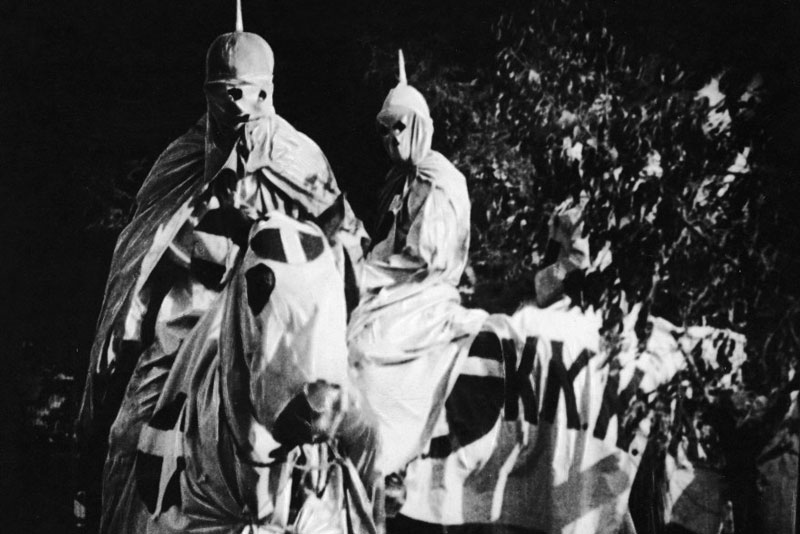
The Birth of a Nation (D.W.Griffith, 1915)
The first costume designers arose from the concerns of pioneers such as D.W. Griffith and Cecil B. De Mille, who proposed making unique costumes for each film. And they found the first designer credited in films, Clare West, who began her work with Griffith’s The Birth of a Nation (1915) and Intolerance (1916); with De Mille she collaborated on ten films, among them Male or Female (1919), The Affairs of Anatol (1921) and The Ten Commandments (1923).
For The Birth of a Nation, a film that openly promoted racism, Clare West designed uniforms for the Ku Klux Klan members that were so gorgeous that she is credited with the actual creation of the violent segregationists’ famous white hood.
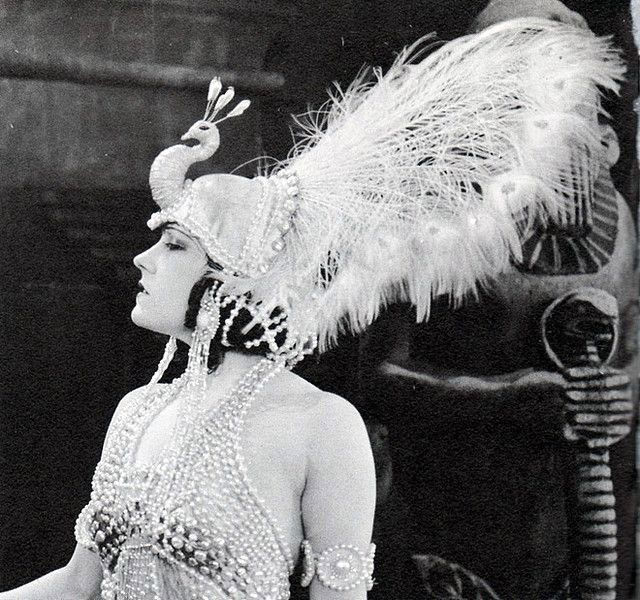
Gloria Swanson.
Soon joined Mitchell Leisen, De Mille’s collaborator and the creator of the newborn star Gloria Swanson, for whom he designed the costumes in Male and Female and Don’t Change Husbands (1919), and whom De Mille turned into the mythical personification of the exotic, sensual femme fatale.
It is a new art with an archaic message, where the woman is objectified and often merely personifies temptation and diabolical attraction. It is the revelation, among others, of Theda Bara, the first vamp to introduce transparency, toe rings and snake bracelets wrapped around arms and legs.
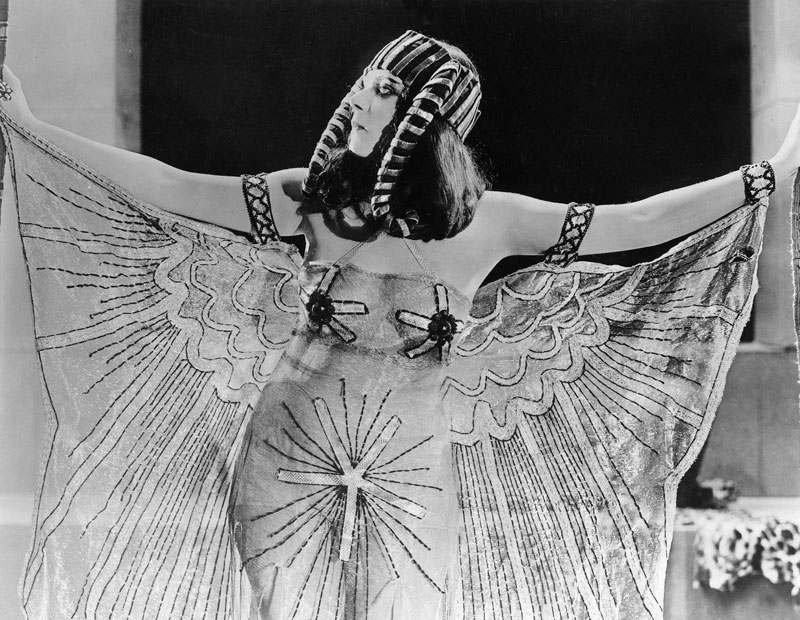
Theda Bara
Theda Bara starred in such suggestive titles as Cleopatra, Salome and The She-Devil, in which she played the role of a seductive Spanish peasant girl. Such was her success that from 1915 to 1918, she starred in 40 films, all of the same historical-fantastic-erotic character with titles that speak for themselves: Sin, The Tiger Woman, Madame Du Barry, The Eternal Sappho, The Vixen…
Pola Negri also rose to fame in the years after the First World War thanks to a series of films directed by Ernst Lubitsch, in which she played famous female vampires from history (Madame Du Barry, Anne Boleyn, Carmen…), in a new line that endowed them with an eroticism that was unusual at the time.
The Italian Rudolph Valentino, with his Mediterranean aesthetic, is the first erotic myth of cinema and the first public figure to provoke fainting fits and hysteria among his fans. That said, it was the day of his funeral, he was a shooting star who died at the age of 31. The film industry invented the idea of the Latin lover with Valentino, which turned out to be a publicity strategy to boost his career.
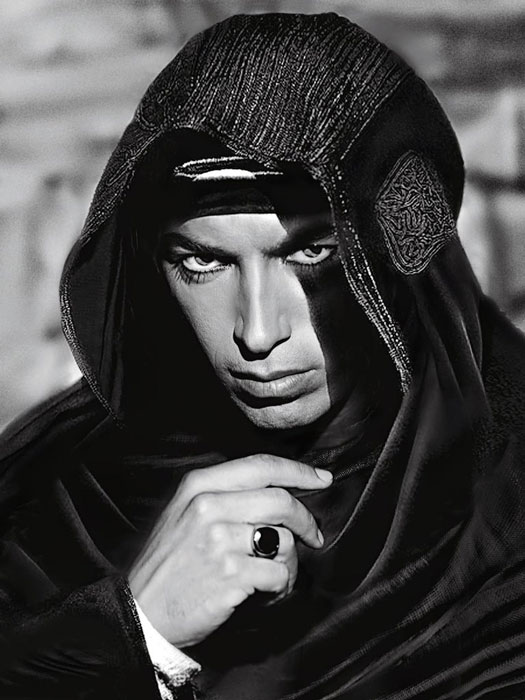
Rudolph Valentino.
In this period, besides Valentino, there were a handful of actors who stood out in the erotic and love films; we exclude the actors in the comedy films, even if off-screen more than one led a life of scandal: Buster Keaton, Charles Chaplin, Harold Lloyd, Fatty Arbuckle, Laurel and Hardy…
In the cinema of American heroes and adventures, the first to arrive is the aforementioned Douglas Fairbanks, who wins the affection and sympathy of the public from the very first moment. Fairbanks, together with his partner Mary Pickford, teamed up with Charles Chaplin and D.W. Griffith in 1919 to form a new company. Griffith and formed a new company called United Artist. However, the fame of the actor with the fine moustache declined with the advent of the talkies.
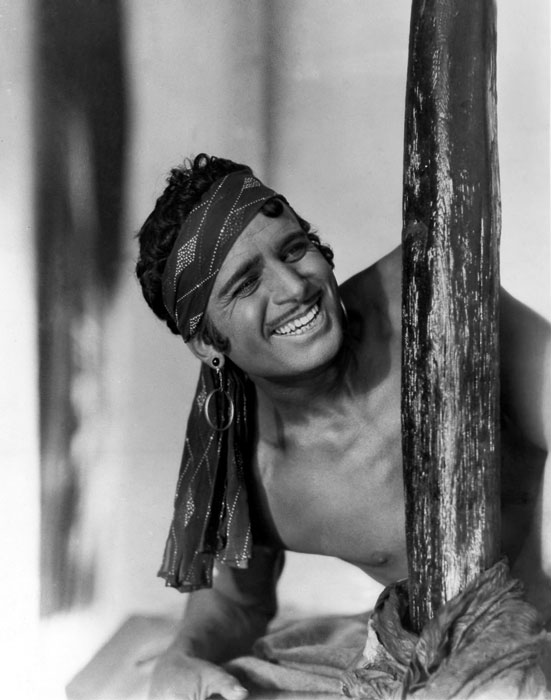
Douglas Fairbanks.
The first full frontal male nudity appeared on screen in 1911 thanks to the Italians Francesco Bertolini, Adolfo Padovan and Giuseppe de Liguoro, in an adaptation of The Divine Comedy called Inferno, one of the first Italian silent film blockbusters.
Homosexuality has been present in cinema since the beginning of its history. Thus, in a scene from A Florida Enchantment (Sidney Drew, 1914), two women can be seen leaving their dancing partners to dance together, which causes the two rejected men to dance together as well.
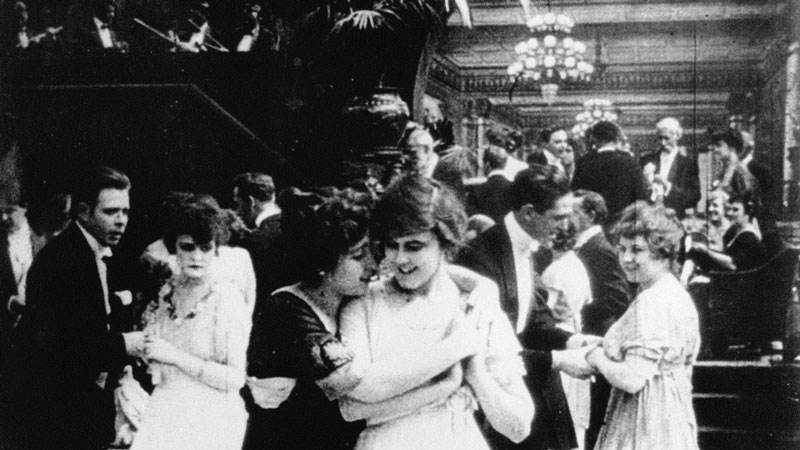
A Florida Enchantment (Sidney Drew, 1914)
During this period, homosexuals were portrayed in a stereotypical and grotesque way so that a popular audience could distinguish gay characters without words. In a scene from Behind the Screen (1916), Chaplin kisses a woman dressed as a man, knowing her true sex, while another man watching begins to flutter around them in a blatantly effeminate manner, and Chaplin kicks him out of the scene with a kick in the ass.
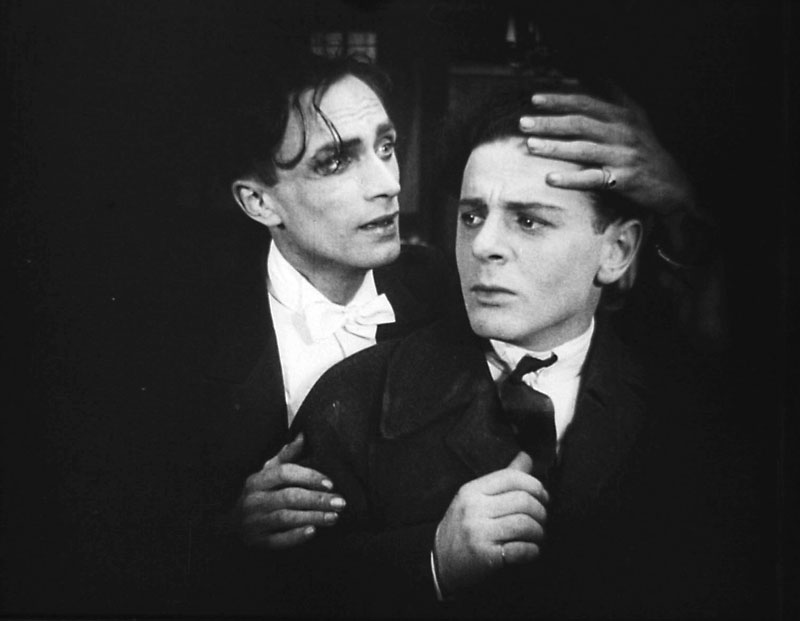
Umheimliche Gesischten (Richard Oswald, 1919)
Richard Oswald’s Umheimliche Gesischten (1919) is the first commercial film to present homosexuality in a positive light and is an indictment of German laws that made homosexuality a crime. The film stars Anita Berber, the great transgressive icon of the Weimar Republic, in a Berlin that enjoyed a cultural and nightlife that found its greatest expression in the cabarets.
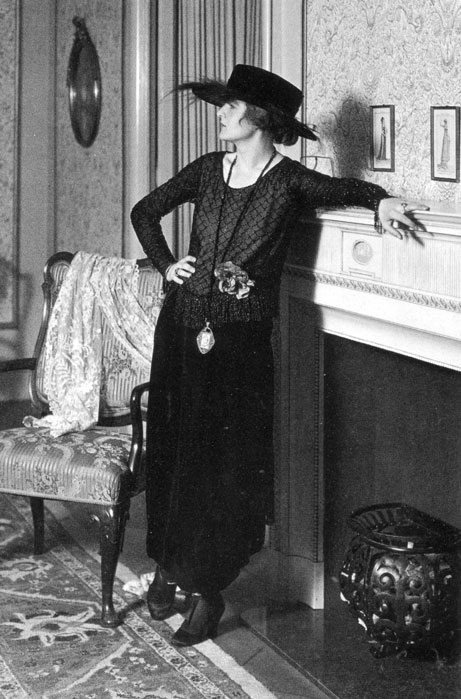
Anita Berber.
But there are paradoxical elements when we talk about eroticism in the early cinema of the first decade of the 20th century. It is clear that this was a historical framework of true revolution, in which the role of a woman who increasingly stood out as courageous and uninhibited was highlighted. But behind the scenes, it was not all rebelliousness and an exaltation of the femme fatale and crazy virgins.
The star system was in the hands of greedy businessmen eager to make money, and the public demanded hot scenes; scenes that were often performed by vulnerable women of humble origins from the variety and adult entertainment scene. Many of them were immigrants and not a few of them were in their teens. Many of the silent film actresses did not speak English and became unemployed with the advent of talkies.
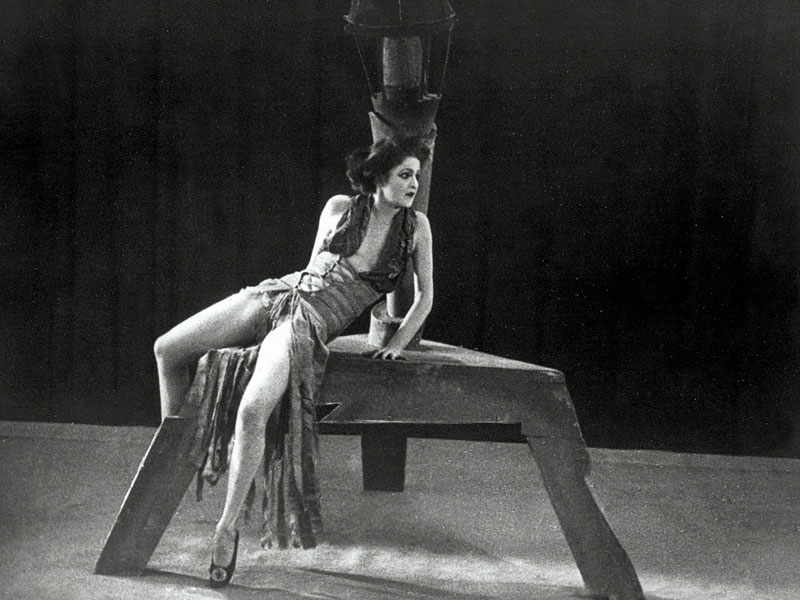
Anita Berber.
With the emergence of #MeToo in 2017, many actresses were able to speak out for the first time about the abuse they had suffered throughout their careers. Now intimacy coordinators are being imposed on film shoots, to supervise nudity and sex scenes, to ensure the physical and emotional safety of the actors and, above all, of the actresses. What would many of those vamps and femmes fatales say today, if they were still alive?
But the change of cycle, modernity and lucid transgression, would come in the following decade, the 1920s, the so-called Roaring Twenties.
(To be continued…)


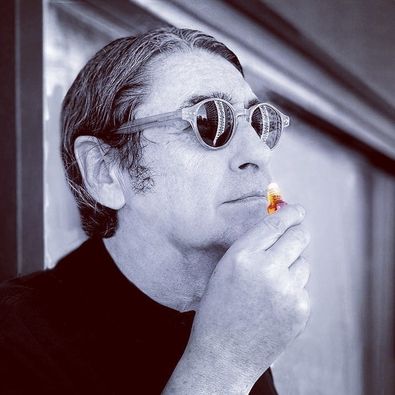
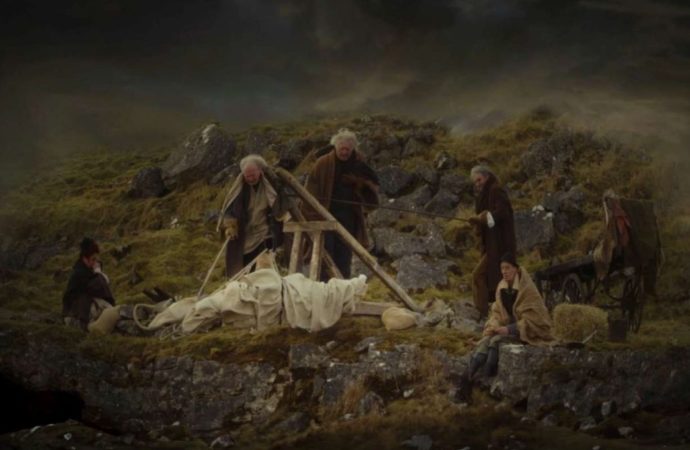

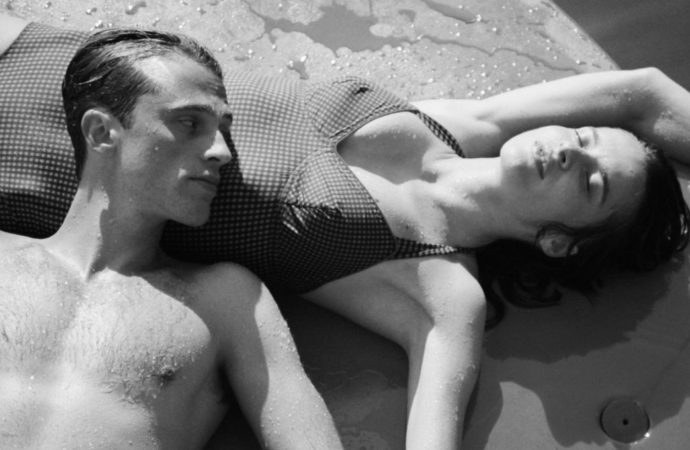

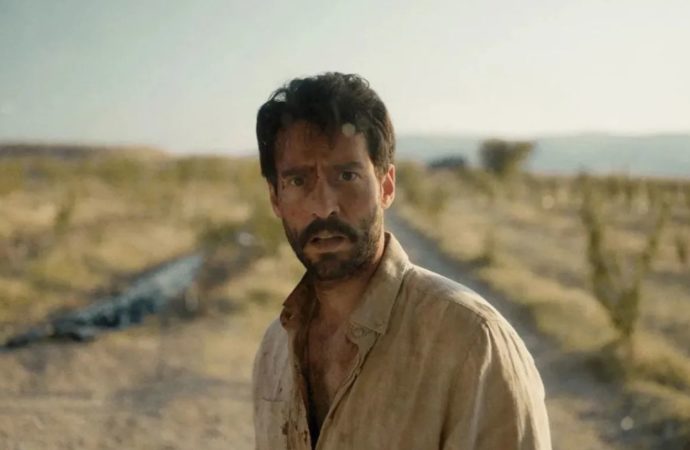

No one has posted any comments yet. Be the first person!